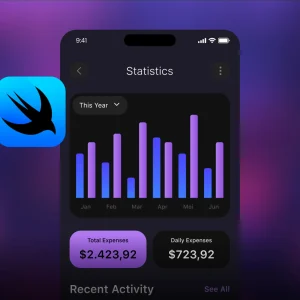Programming
Showing 817–828 of 1793 results

Introduction to Rust Programming
Get started with Rust programming from scratch by building a solid foundation!

Introduction to Symbolic Math with MATLAB
Get started quickly with an introduction to symbolic math.

Introduction to the C# 9 Type System
C# is a strongly-typed language. In this course, you’ll learn how to work with built-in data types, classes, interfaces, and inheritance.

Introduction to Virtual Reality
Explore the fundamentals of virtual reality, including hardware, software, and development tools.

Introduction to Visualization Using D3.js
Learn the fundamentals of data visualization using D3.js, focusing on creating interactive and dynamic charts and graphs.

Introduction to Web Development
Explore the basics of web development, covering HTML, CSS, JavaScript, and web design principles.

iOS Developer
Learn how to use Swift and SwiftUI to build iOS applications.

iOS Development with SwiftUI and SwiftData
Learn to develop iOS applications using SwiftUI for user interfaces and SwiftData for data management.

iOS User Interfaces with Swift UI
Learn to design intuitive user interfaces for iOS applications using SwiftUI principles and components.

Jakarta EE 10 Fundamentals
This course will teach you how to turn a blank page into a full Jakarta EE 10 application.

Java 11 Core Libraries: Java Log System
Logging is crucial for understanding what is happening to your app in production. This course will teach you how to use the Java Log System for logging and give you some back practices for logging in your application as well.

Java 11 Fundamentals: Collections
In this course, you will learn why you would want to use collections instead of arrays and understand the power of lists, sets, and maps.
